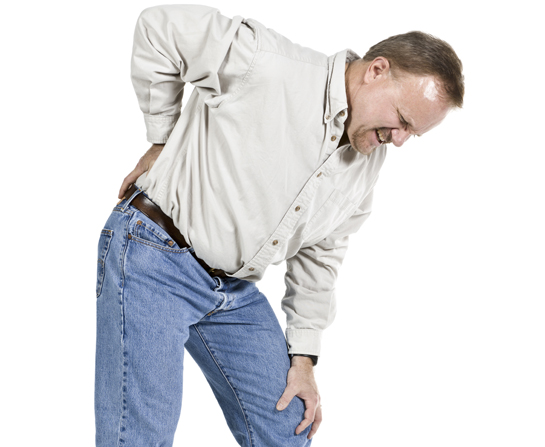Oh, the Nerve!
May 7, 2022 Return

You try to ignore the pain in your lower back at first. But as time progresses, so does its intensity. When you bend down to pick up your laundry basket, you feel the familiar dull ache radiating over your lower back. When you reach for a book on the upper shelves, you feel the pain again. Come bedtime, your sweet slumber isn’t so sweet anymore due to you being woken up by the pain at random times in the night. It seems to be seeping into every aspect of your daily routine. Aargh!
But not all’s gloom and doom! There are things you can do to alleviate and maybe, even rid yourself of the suffering. Here are some suggestions.
Work it off
Contrary to popular belief, exercise does work. Low-impact exercises like swimming and brisk walking can actually help with back pain. A study reported that its 30,000 participants who exercised 2-3 hours weekly experienced a 20% reduction in back pain. It could be that exercising releases endorphins (natural painkillers) and causes blood vessels to expand. This allows more blood to flow through – hence, nourishing damaged nerves.
Put it to bed
Your sleeping position can have a significant impact on your back. A good position is sleeping on your side with your knees bent in a relaxed, fetal-like position. Additionally, wedge a pillow between your legs to prevent the top leg from sliding forward – which can twist your lower back. To maintain your spine’s alignment as much as possible, placing a small pillow under your neck also helps.
The right ergonomics
Most people spend at least 9 hours a day at their jobs, constantly hunched over their desks so it’s no surprise if poor ergonomics are giving you lower backache. Place your monitor at least 50 centimetres away from you; ensure your wrists, forearms and hands are parallel to the floor as much as possible; allow your upper arms to hang down in a loose, natural manner; relax your shoulders and position your feet firmly on the floor.
Little details count
Don’t overlook the little details in your daily routine. Instead of bending at the waist when picking up heavy objects, bend at the knee. Carry your backpack on both shoulders, not one. Trade your stilettos for comfortable flats or low-heeled shoes (less than 2.5 centimetres high). When standing, don’t bend sideways or slouch.
OTC treatment
Over-the-counter ointments, patches and painkillers can usually do the trick if the pain is mild. Remember to inform your pharmacist if you are on other medications or have a certain medical history.
Seek medical help
If your pain persists even after trying the above steps, consult a doctor as your backache may hint at a more serious condition (e.g. diabetic neuropathy or degenerative disc disease) and requires immediate medical attention. Treatment may involve a combination of medication (e.g. anti-convulsants), physiotherapy and lifestyle modifications.
References:
Healthline. Available at www.healthline.com
MedicineNet.com. Available at www.medicinenet.com
WebMD. Available at www.webmd
If you like this article, do subscribe here.
